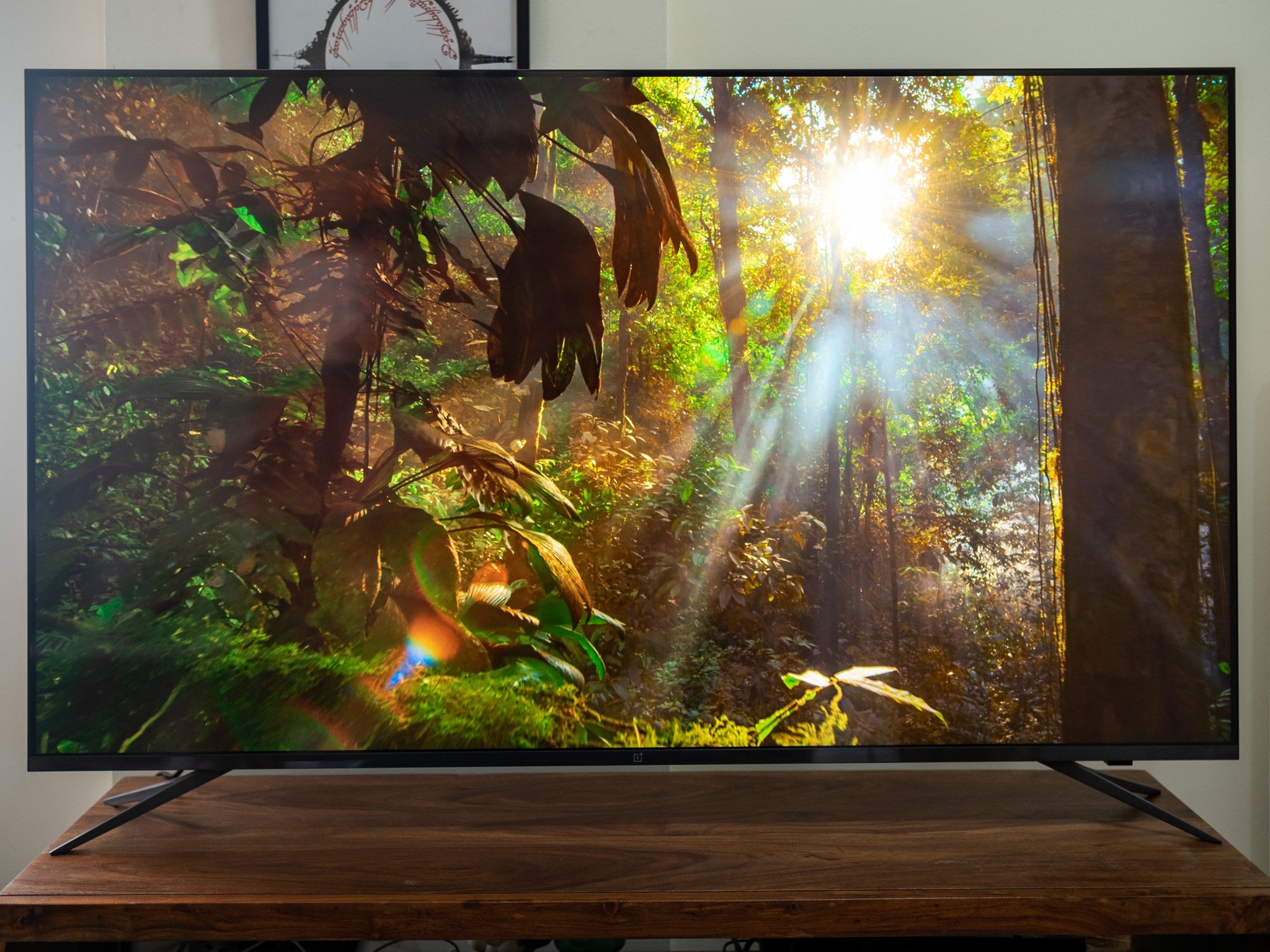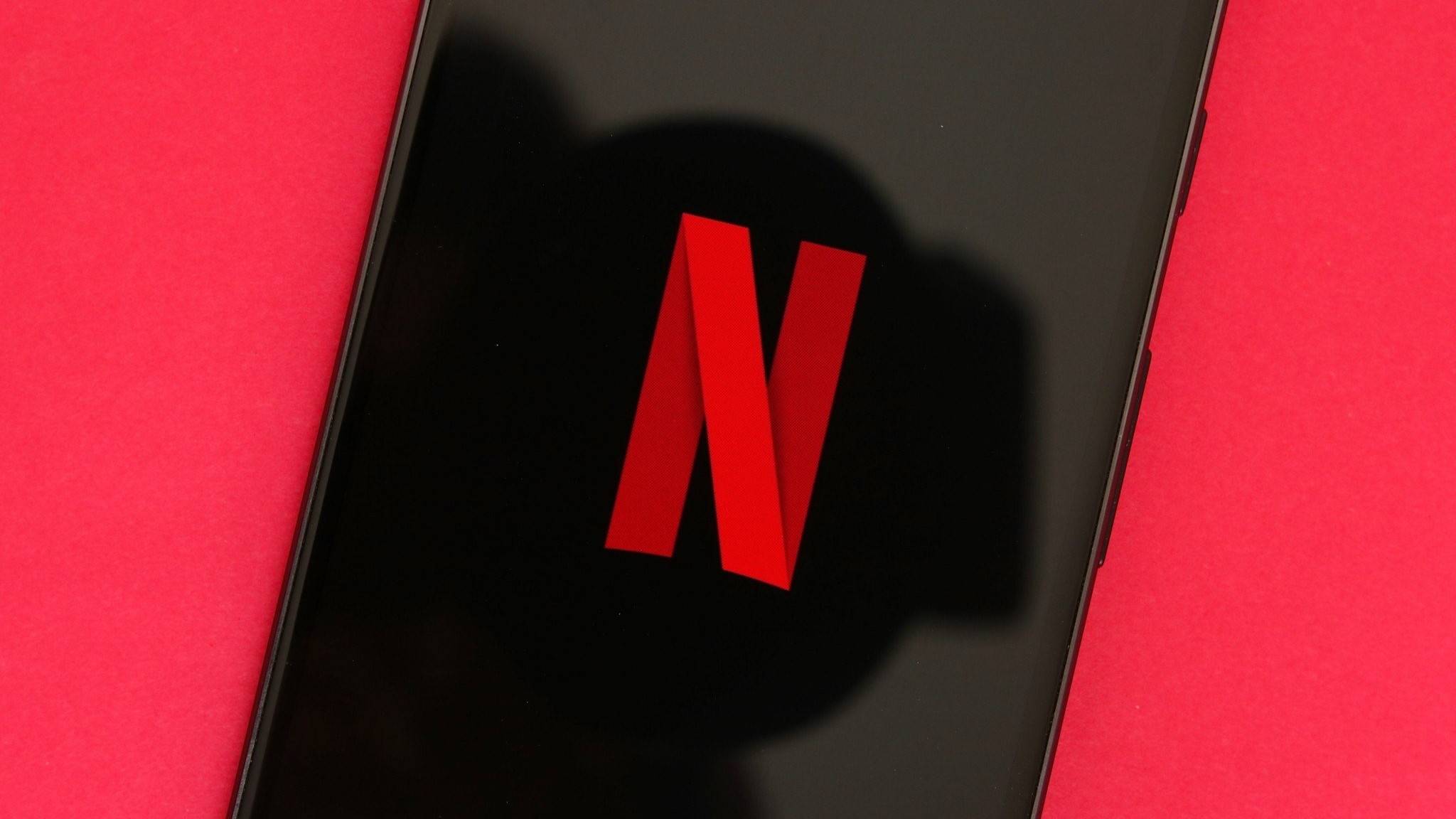Android Central Verdict
Bottom line: The OnePlus TV U1 has it all: a vibrant 4K display that delivers HDR10+ and Dolby Vision content, Netflix and Prime Video out of the box, Android TV with meaningful additions, and a premium design with a slim profile. If you're in the market for a new TV for ₹50,000, this is the one to get.
Pros
- +
Premium design with thin bezels
- +
Vibrant 4K panel with Dolby Vision and great color accuracy
- +
Android TV with meaningful additions
- +
Netflix and Prime Video included out of the box
- +
Usable remote
Cons
- -
Wall mounting is a hassle
- -
On the costlier side
Why you can trust Android Central
OnePlus launched its first TVs in India under the Q series, and while the TVs had a lot going for them, the fact that they were positioned in the premium segment made them inaccessible to a majority of customers in the country. OnePlus is now remedying that with a follow-up model in the U series, the U1. With the TV, OnePlus is squaring up against the likes of Xiaomi and Vu.
Over the last two years, Xiaomi's Mi TV series has been the product line to beat in India, with the manufacturer now the largest player in the online category. A lot of the momentum came down to the fact that the Mi TV series offered incredible value, and OnePlus is now emulating that same strategy.
Alongside the U series, OnePlus is rolling out an entry-level Y series of TVs that start off for just ₹12,999 ($175). The Y series significantly lowers the barrier for entry for those looking to pick up a smart TV, and should make OnePlus that much more competitive in this category. The U1 is available for ₹49,999 ($660), and it delivers most of the features that made the Q series stand out at a more affordable price point.
The Q series TVs had several issues at launch as well — the remote was unusable, there was no Netflix out of the box, and the chrome design wasn't to everyone's tastes. OnePlus is fixing all of those issues with the U series, and the company is positioning elegant design as a standout feature on its latest TVs. So let's take a look at the OnePlus TV U1, and whether it can get a leg up over Xiaomi.
OnePlus TV U1 Design
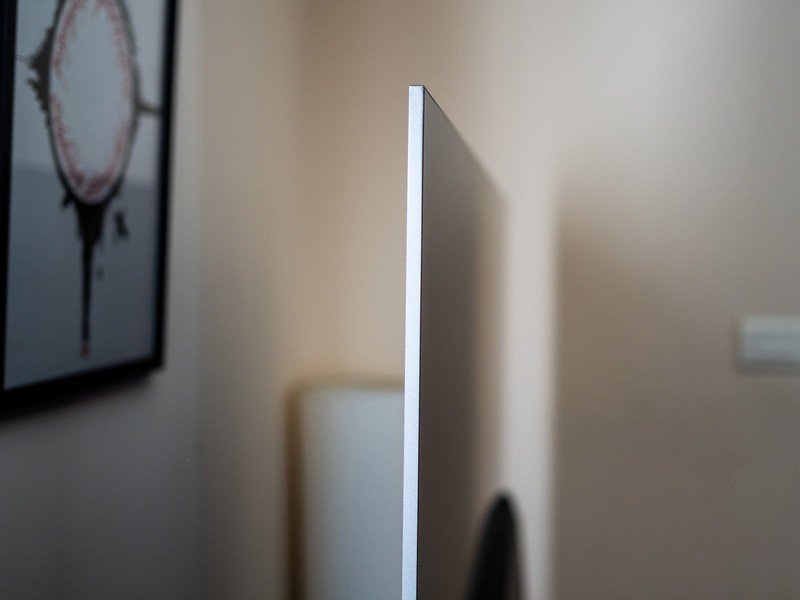
Design is a standout point for OnePlus with the U series — that much was clear when I interacted with OnePlus CEO Pete Lau earlier this month. The OnePlus TV U1 has a slim design with the thickness at just 6.9mm. The bottom one-third is wider as it houses all the internal components and the ports, but overall the TV looks just as premium as options from Samsung and LG that cost twice as much.
The OnePlus TV U1 is just as elegant as options from Samsung and LG that cost twice as much.
Another differentiating factor on the design front is the carbon fiber pattern at the back. The pattern covers the lower one-third at the back — where the internal hardware is housed — and there's a removable cover that hides the ports. It leads to a cleaner look, but if you want to plug in an HDMI cable, you will have to get rid of the cover as there's no way to route cables from underneath it.
In fact, I prefer the design of the U1 to that of last year's Q1 Pro. That particular model came with a spine that held the entire weight of the TV, and the chrome base just didn't fit into the premium aesthetic. With the U1, however, OnePlus went back to basics and just added feet on either side of the TV. The cleaner design makes the TV look that much more premium, and the brushed metal finish for the legs and the bottom bar give it an added touch of elegance.
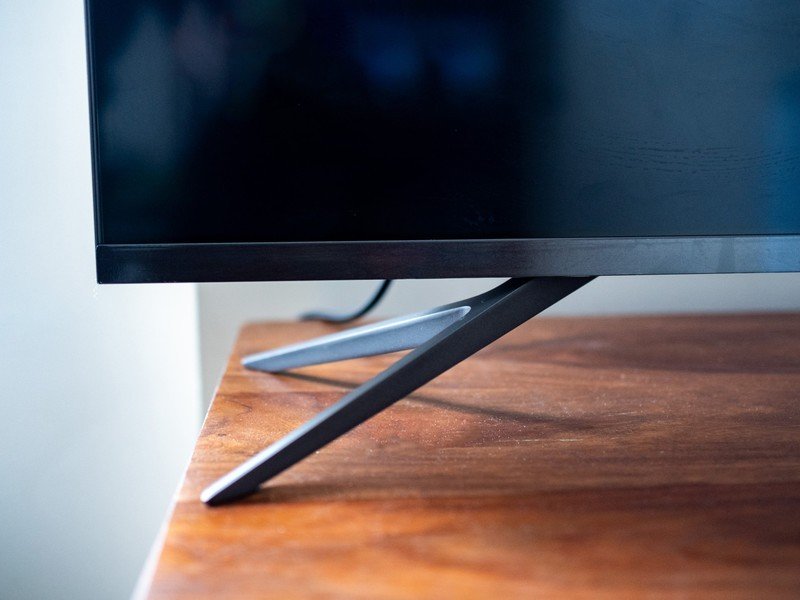
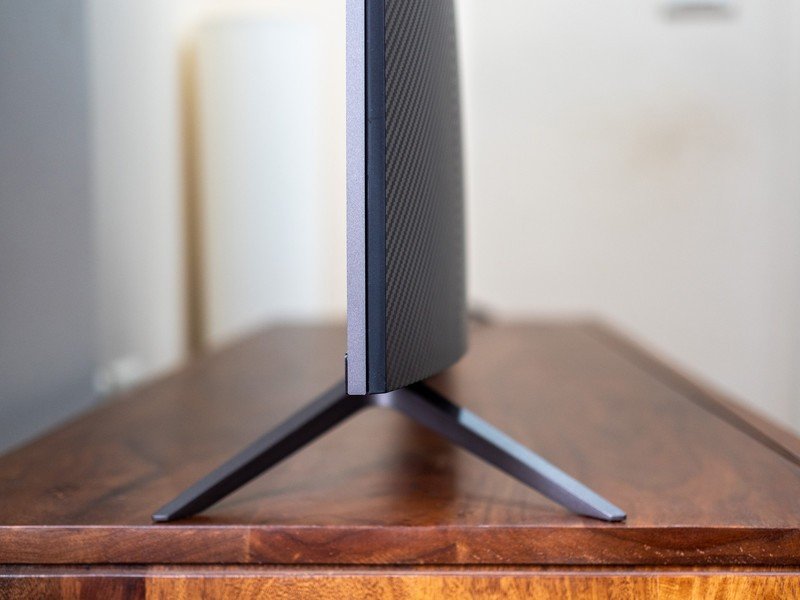
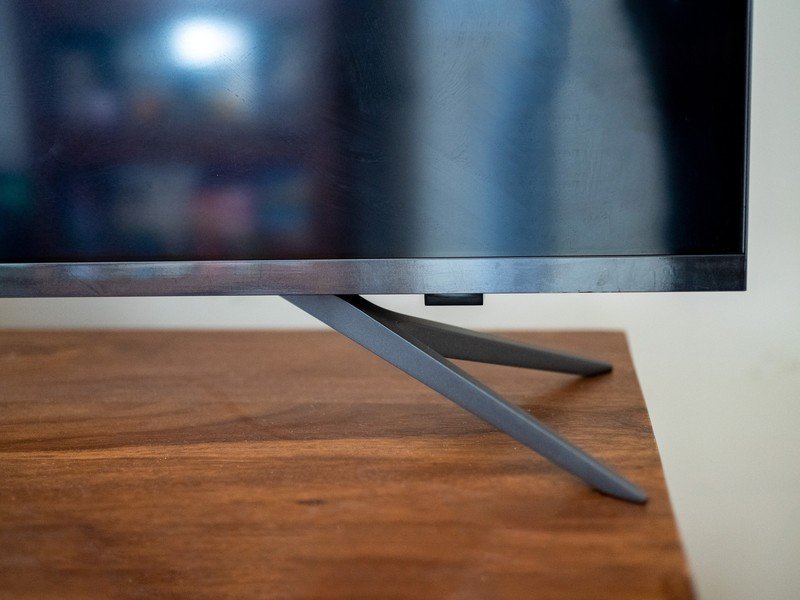

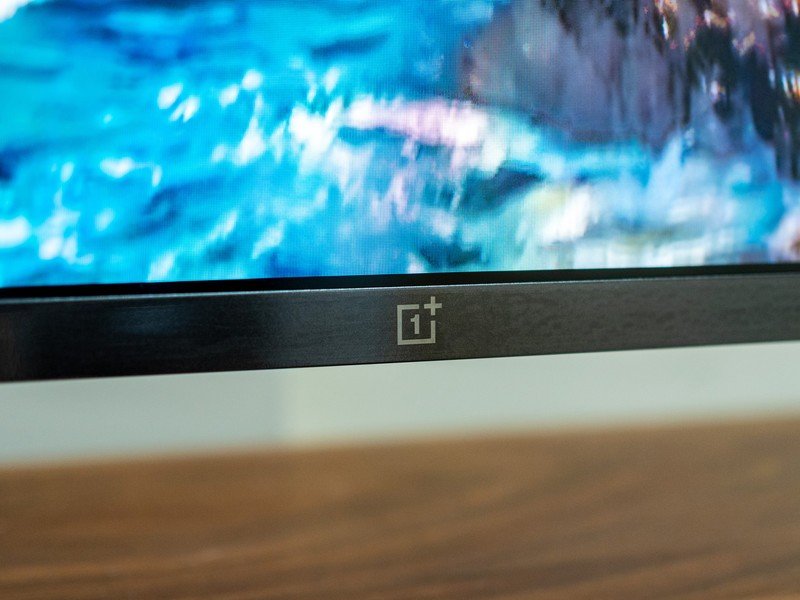
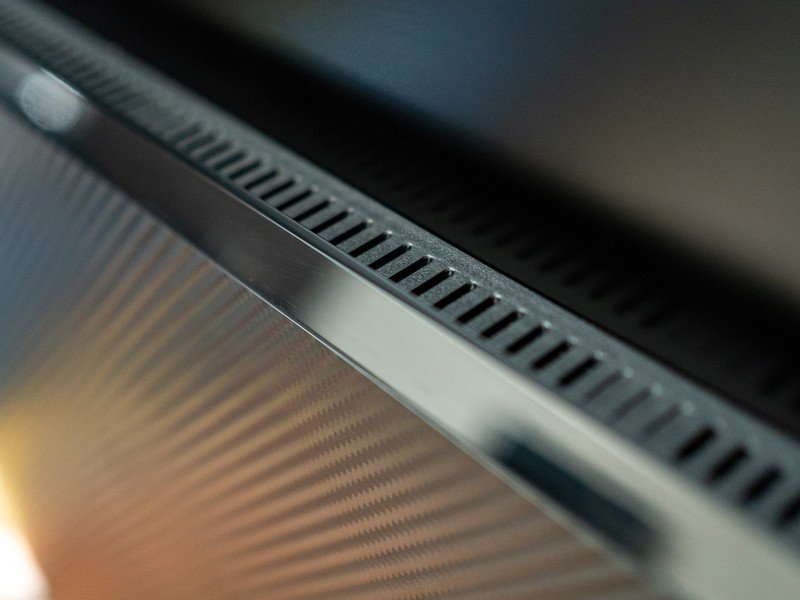
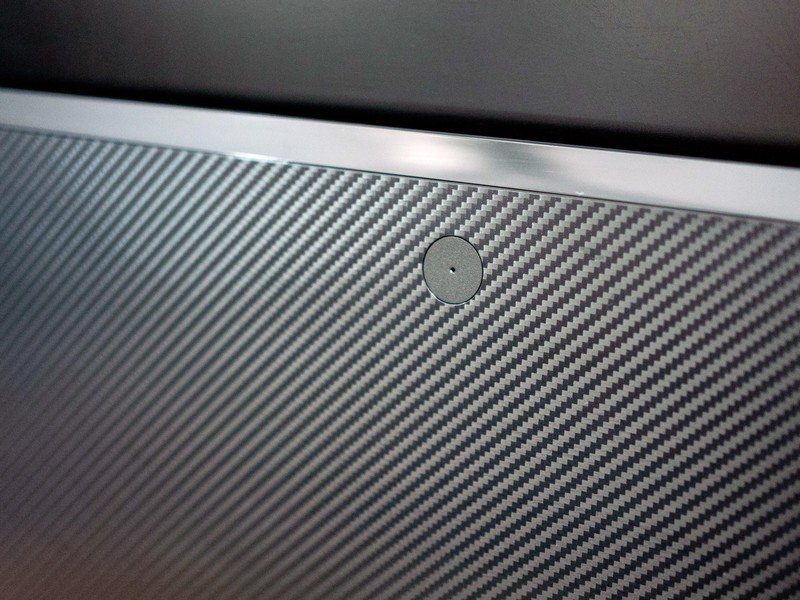
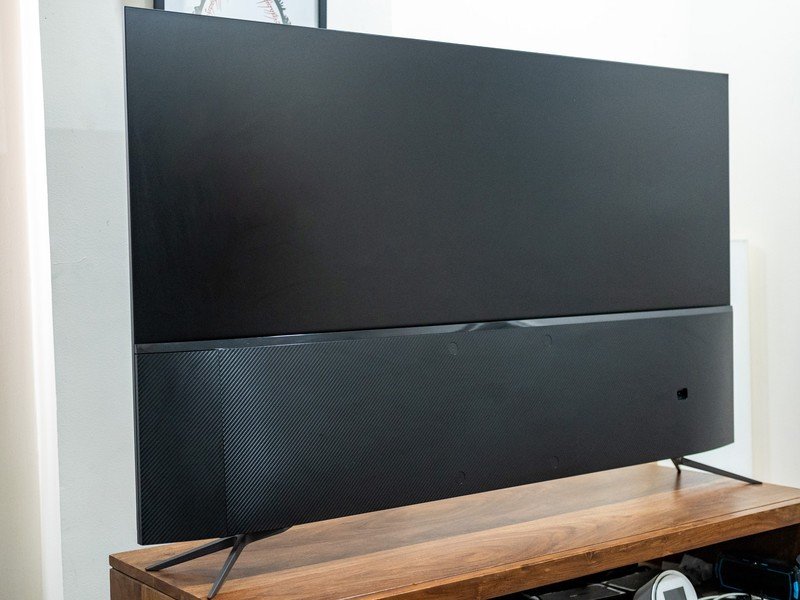
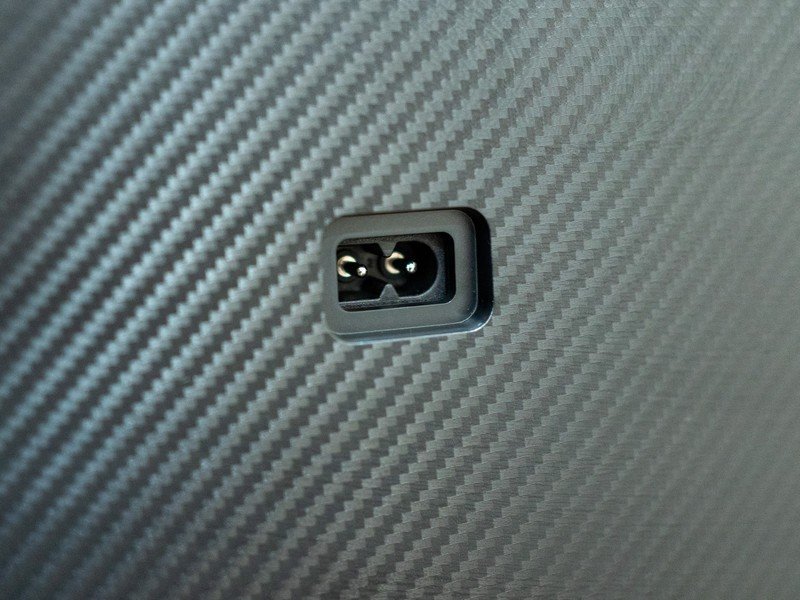
There are no visible screws on the TV, and OnePlus notes that it incorporated a lot of the feedback from its user community over the design of the TV. That was one of the reasons for the carbon fiber pattern at the back and the slim chassis, and overall, there is a lot to like on the design front here. OnePlus doesn't provide the wall mounting kit in the box, but the company has mentioned that customers will be able to request the kit during installation and it would be provided without any added charge.
The aluminum chassis along with that gunmetal finish makes the OnePlus TV U1 stand out in this category. OnePlus nailed the design brief with the TV, and for what you're paying here, you are getting a great product.
OnePlus TV U1 Display
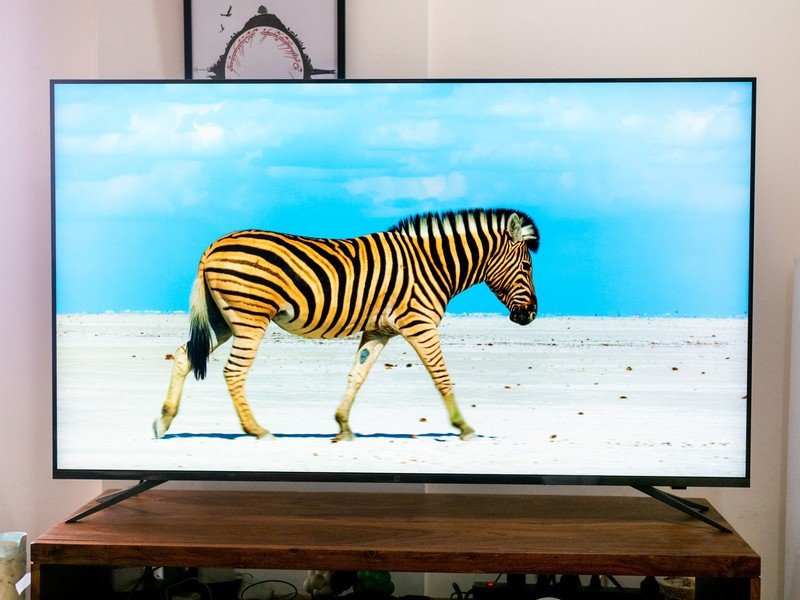
The OnePlus TV U1 has a 55-inch 4K LED display with HDR10+ and Dolby Vision. Building on the thin side profile, OnePlus has trimmed the bezels around the panel, and the result is a gorgeous bezel-less design that looks fantastic.
The OnePlus TV U1 has one of the best displays you'll find in this category.
The panel has 93% DCI-P3 color gamut, and OnePlus' Gamma Engine comes with a host of tweaks that deliver a clearer image, including super resolution, dynamic contrast, anti-aliasing, and noise reduction. OnePlus is effectively leveraging its Gamma Engine to deliver more vivid and clearer images, so that even if the source resolution isn't high, you'll still get decent visuals.
There's also motion estimation, motion compensation (MEMC) for smooth video playback, with the mode coming in handy for sports content in particular. The OnePlus TV U1 comes with a gaming mode that decreases the latency to 22ms.
The OnePlus TV U1 holds up incredibly well in real-world usage. The panel has vibrant colors and great contrast levels, and while it isn't quite as vivid as the QLED panel on the Q1 series, it is one of the best displays you'll find in this category. Viewing angles are great, and Dolby Vision content in particular looks fantastic. It is a definite leg up over what Xiaomi and others have to offer in this segment.
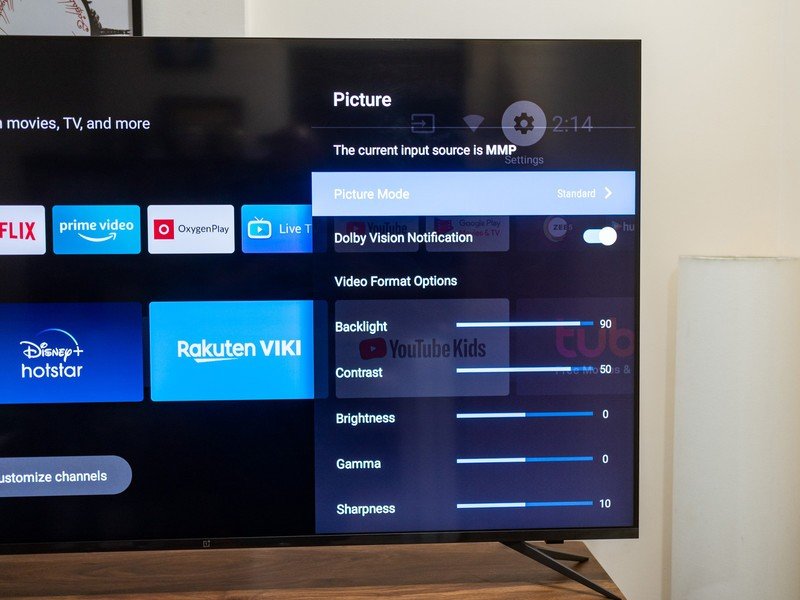
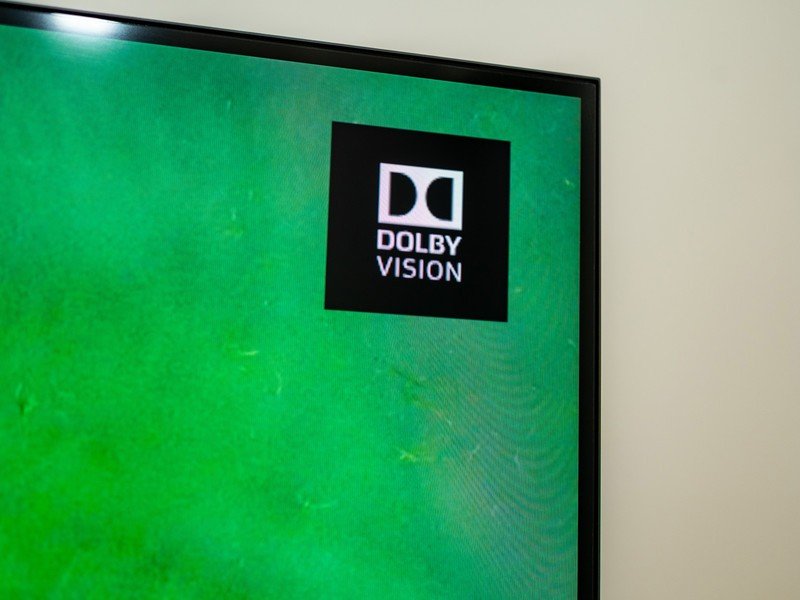
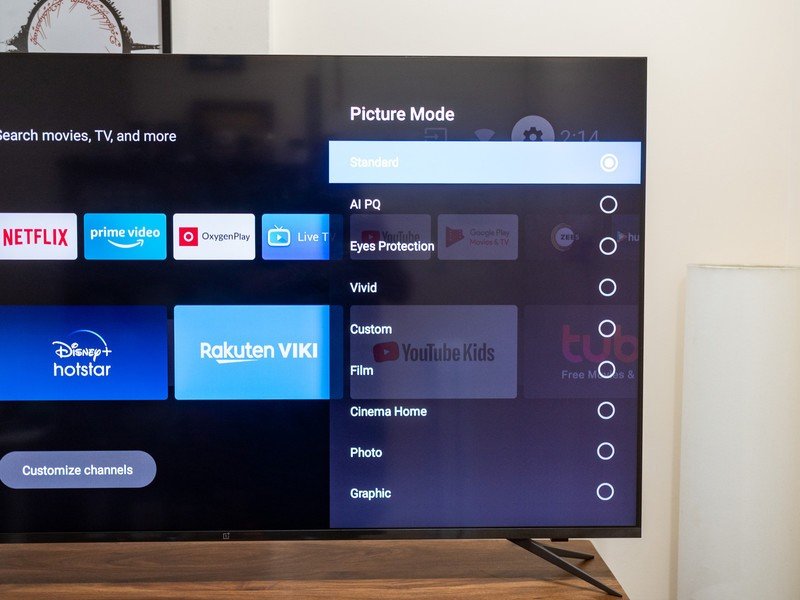
Coming to the audio side of things, the OnePlus TV U1 has four speakers — two high-frequency units and two full-range speakers — that combine to deliver 30W of output. OnePlus says it rotated the speakers by 90 degrees and made a few design tweaks to deliver 50% better bass versus traditional designs, and that shows up in day-to-day use.
You get Dolby Atmos, and like last year, there's a dedicated Bluetooth mode that essentially lets you use the TV as a soundbar. Onboard audio is serviceable, but you will want to pair the TV with a decent soundbar or speaker system for a more immersive sound.
When it comes to day-to-day use, the OnePlus TV U1 is as fluid as any TV I have used to date. It has 3GB of RAM and 16GB of storage, and is powered by the same MediaTek chipset that's on the Q1 series. The robust hardware means you won't see any lag at all when navigating the interface, and while I usually switch to a streaming box like the NVIDIA Shield with all the TVs I use, I didn't find the need to do so here.
OnePlus TV U1 Remote
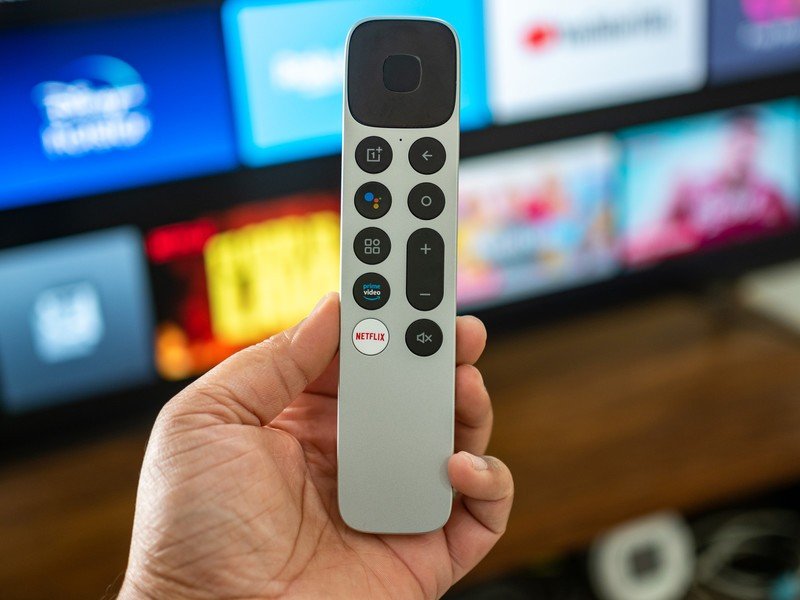
One of the main issues I had with the Q1 series was the remote: it was too thin and unwieldy to be any good in day-to-day use, and the fact that the volume buttons were located on the side made it doubly frustrating. Also, I didn't understand why it had to charge over USB-C.
Thankfully, the remote that's bundled with the OnePlus TV U1 is much better. It is big and bulky, and you get all the buttons: there's volume controls, a dedicated mute button, buttons for invoking Google Assistant and launching Netflix and Prime Video, and back and home navigation buttons. You also get a direction pad at the top, and overall this is a much more well thought-out design.

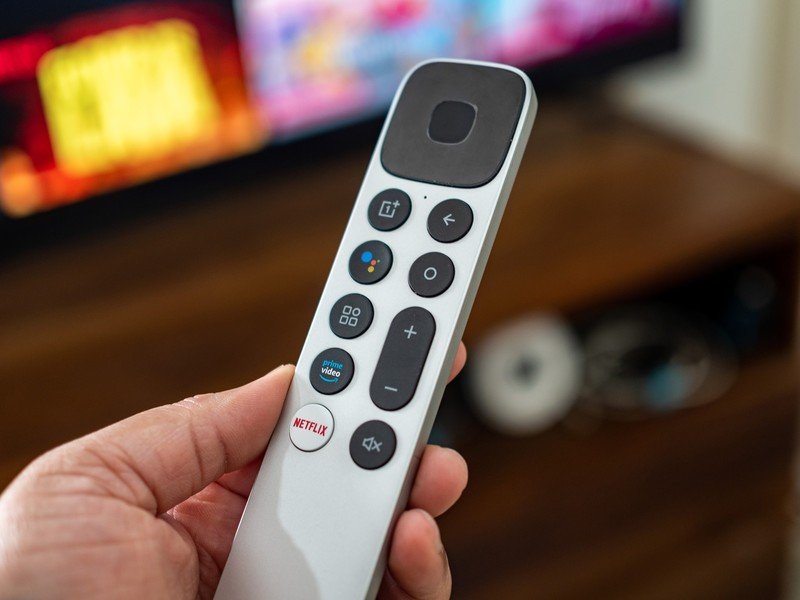
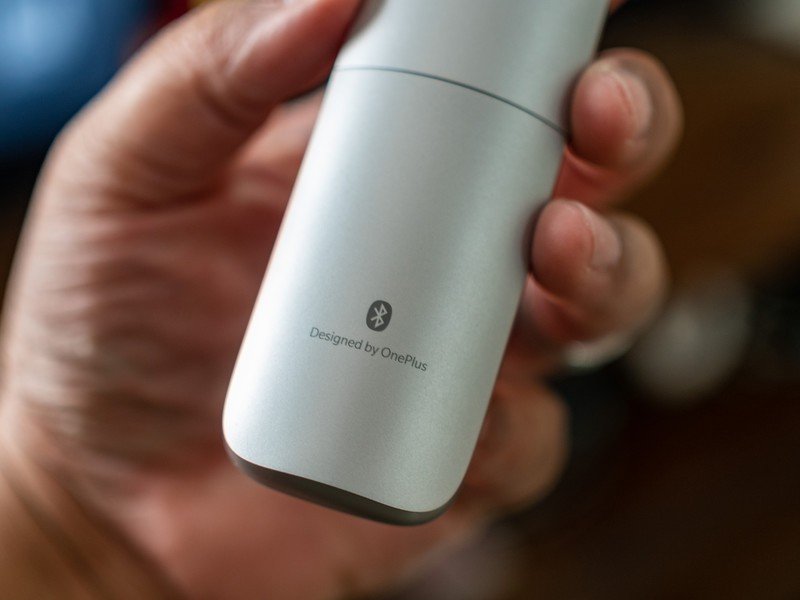
There's also a OnePlus button for launching Oxygen Play, the company's curated content platform. The remote now works with two AAA batteries, and yes, you'll find two batteries included in the box. The one downside is that the remote is made out of plastic, but I don't care about it at all. This is a much better remote than what I've used on the Q1, and that's all you need to know.
OnePlus TV U1 Connectivity

The OnePlus TV U1 has all the connectivity options you're looking for. There's Wi-Fi ac, Bluetooth 5.0, Chromecast built-in, DLNA, and the aforementioned Bluetooth Stereo mode.
I didn't face any issues connecting the TV over Wi-Fi, and I had a reliable signal throughout the three weeks I tested the U1. I didn't notice any buffering on Netflix or other streaming services, or any other connectivity-related issues.
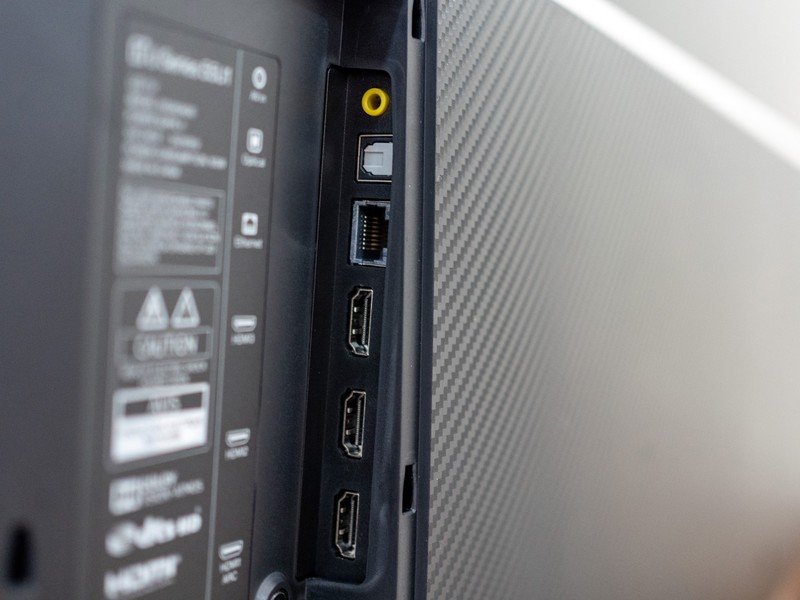
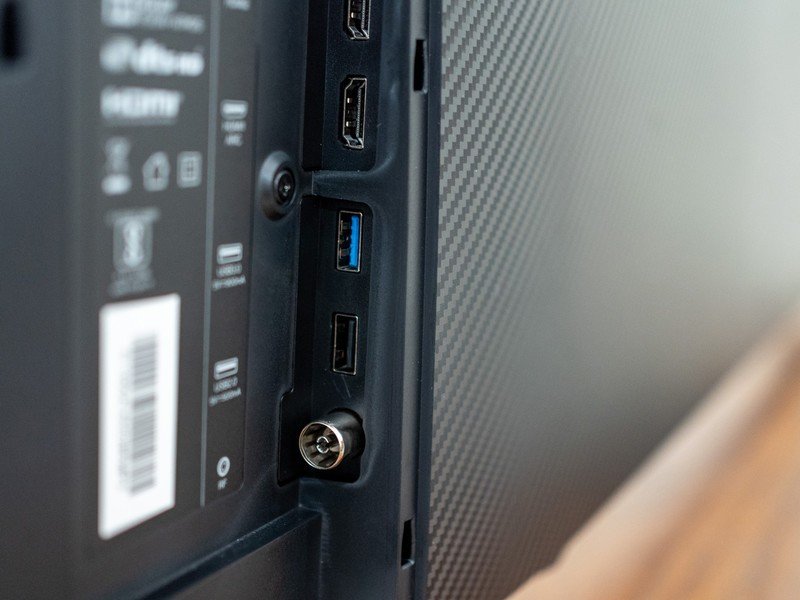
In terms of ports, you'll find three HDMI 2.0 ports — including one with ARC — as well as one USB 2.0 port, a USB 3.0 port, optical out, Ethernet port, an AV Composite port, and an RF connector. The ports are accessible, and they're clearly labeled, so even if you have the TV wall-mounted, you should not have any issues when it comes to connecting an HDMI cable or slotting a USB drive.
OnePlus TV U1 Android TV
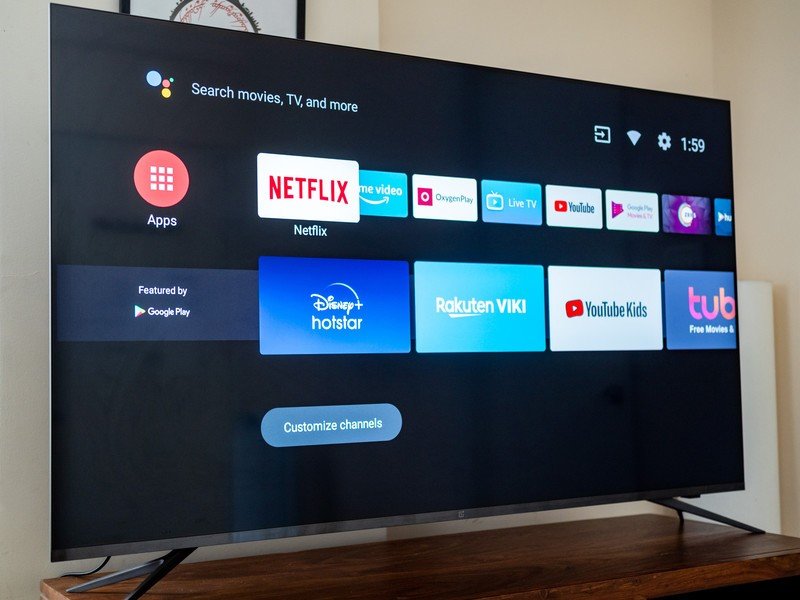
The OnePlus TV U1 runs Android TV out of the box. Android TV is still based on Android 9.0, so that's what you'll find here. I like the Android TV interface as it's clean and doesn't get in the way of accessing your favorite streaming services — it's telling that I have six TVs in the house now, and all of them run Android TV natively or via a streaming box.
There's Android TV out of the box, and OnePlus Connect continues to be a standout feature.
Anyway, the U1 comes with a Data Saver mode, with Xiaomi being the first brand to offer this feature on a TV. It's clear that a data saver feature is something that customers in India are looking for, so it's good to see that on the TV. The mode lets you limit background usage, lower the video resolution, and limit network bandwidth.
There's also a Kids Mode that lets parents set time limits and whitelist content that children can access on the TV. One of the standout features on the software side of things is OnePlus Connect, with the feature making it easier to control various features on the TV with your phone. You can easily cast content, switch between apps, and much more.
As is the case with all TVs that run Android TV, the U1 has Google Assistant baked in. You also get Chromecast built-in, and you can also install Alexa on the TV if you're invested in Amazon's ecosystem. This time around, Netflix and Prime Video are available out of the box, and you can always install other streaming services from the Play Store.
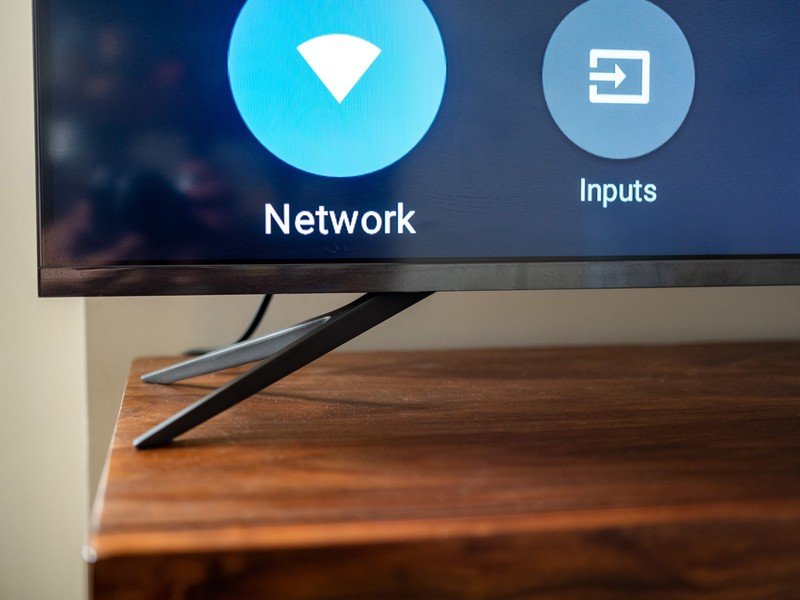

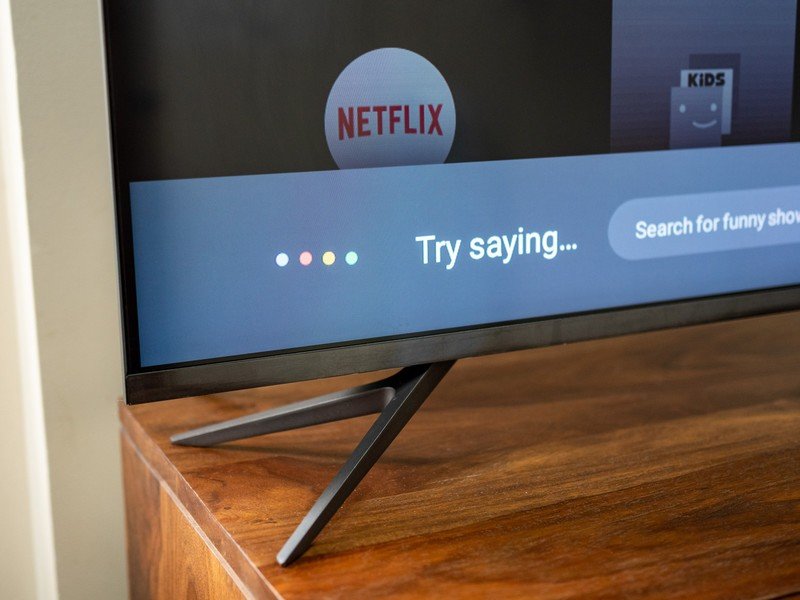
A new feature coming to Oxygen Play — OnePlus' content curation platform — is Content Calendar. It lets you set reminders to make sure you don't miss an upcoming episode of your favorite show, or make to-do lists of shows you're interested in streaming. OnePlus is also leveraging its cloud photo sharing service, and if you already have photos on the platform, you'll be able to access them on the TV.
All the new software features are coming to the Q1 series in the coming weeks. Overall, there's plenty to like on the software front with the TV U1, and with the likes of OnePlus Connect and Oxygen Play, you get a few get a few meaningful additions that make using Android TV that much more exciting.
OnePlus TV U1 Competition
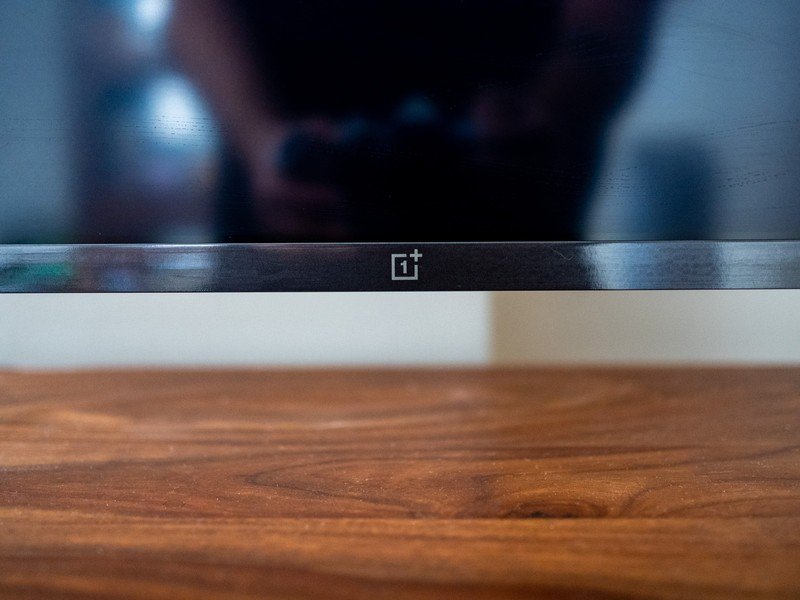
There are a lot of options if you're looking for a 4K TV for under ₹50,000 in India right now. The obvious choice here is the 55-inch variant of the Mi TV 4X, which is available for ₹34,999 ($465). You get a 4K LED panel, 20W onboard audio, Android TV with all your favorite streaming platforms included out of the box, and Xiaomi's own PatchWall interface. It is great value, but you're not getting Dolby Vision, and the panel quality isn't as good as the OnePlus TV U1.
TCL also has a decent 55-inch 4K model that sells for ₹44,999 ($595), but that particular variant is from 2019. That said, you get a vibrant panel, HDR10, and Android TV with access to all the streaming services.
OnePlus TV U1 Should you buy it?
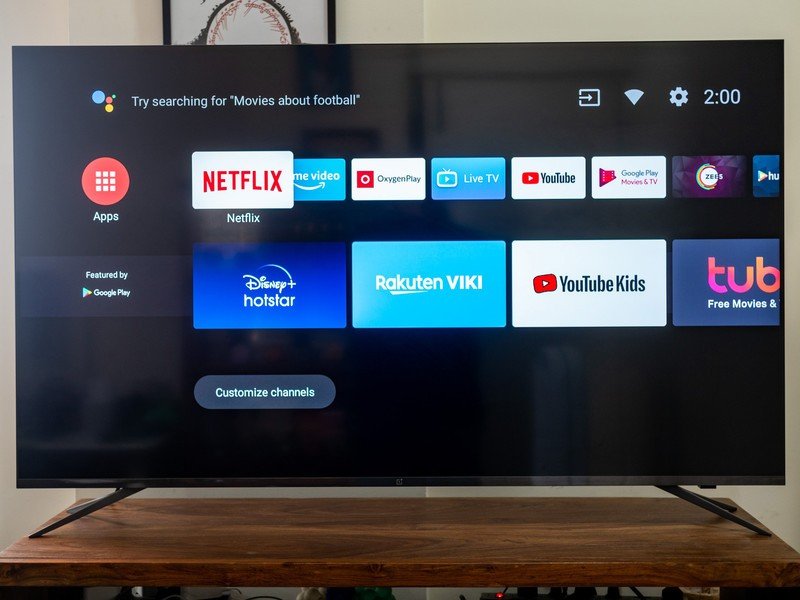
Who it's for
- If you're interested in a 4K TV with Dolby Vision for ₹50,000.
- If you want a clean Android TV interface with Netflix and Prime Video.
- If you're looking for a fluid interface without any lag and great onboard audio.
- If you want all the latest connectivity features and an easy-to-use remote.
Who it isn't for
- If you're in the market for a QLED or OLED display.
I wasn't particularly keen on the OnePlus TV Q1 last year. Sure, the TV had a vibrant QLED panel, but it didn't deliver when it comes to value. Thankfully, that isn't the case with the OnePlus' 2020 launches. By turning its attention to the budget and mid-tier segments, OnePlus is making its TVs much more accessible, and with the OnePlus TV U1 in particular, the value on offer is much better than last year.
The OnePlus TV U1 delivers everything you want from a TV in this category.
The aluminum chassis and slim profile with thin bezels make the OnePlus TV U1 stand out, and the display is one of the best you'll find in this category. It has vibrant colors and runs Netflix and Prime Video at 4K without any issues, and Dolby Vision content also looked great on the TV. The 30W onboard audio is similarly great, and it does a passable job in day-to-day use.
Then there's the fact that the TV runs Android TV out of the box, and you get a few useful additions in the form of OnePlus Connect and Data Saver mode. Google Assistant is baked in and you get Chromecast built-in, and the remote finally feels great in-hand. All of your favorite streaming services are also available out of the box, and overall, the OnePlus TV U1 isn't really lacking in any area.
4 out of 5
And that, ultimately, is what makes it a standout option in this category. If you're in the market for a 4K TV based on Android TV for ₹50,000, the OnePlus TV U1 is the default option. Sure, the Mi TV 4X offers a TV for ₹15,000 less, but the U1 is a much better product overall, and you're just getting a lot more in terms of the panel quality and the design.
Of course, if you don't want to spend as much on a TV, there's the OnePlus TV Y series. OnePlus is rolling out a 43-inch FHD option and an entry-level 32-inch 720p variant. Both models have bezel-less designs, 20W onboard audio, Android TV, and a similar set of software features.
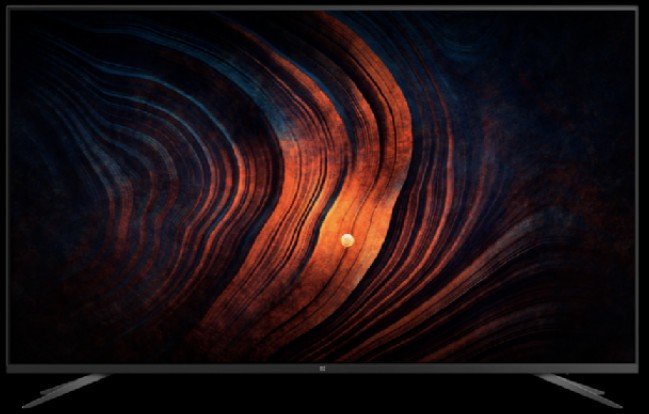
One of the best TVs in this category
The OnePlus TV U1 has it all: a vibrant 4K display that delivers HDR10+ and Dolby Vision content, Netflix and Prime Video out of the box, Android TV with meaningful additions, and a premium design with a slim profile. If you're in the market for a new TV for ₹50,000, this is the one to get.

Harish Jonnalagadda is Android Central's Senior Editor overseeing mobile coverage. In his current role, he leads the site's coverage of Chinese phone brands, networking products, and AV gear. He has been testing phones for over a decade, and has extensive experience in mobile hardware and the global semiconductor industry. Contact him on Twitter at @chunkynerd.
